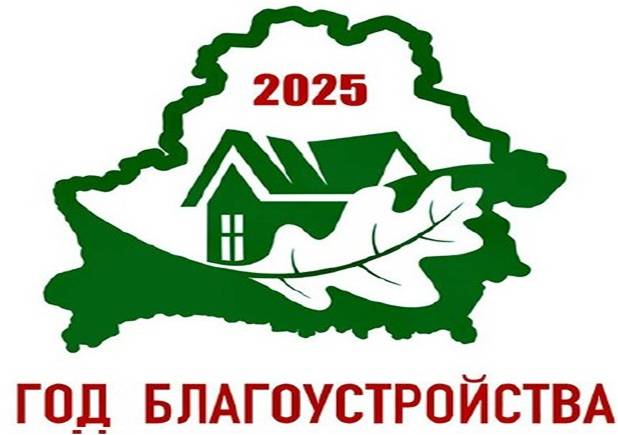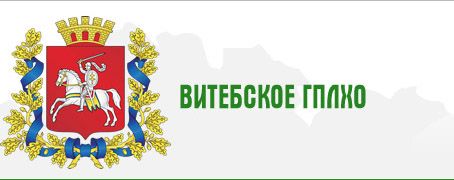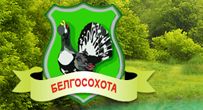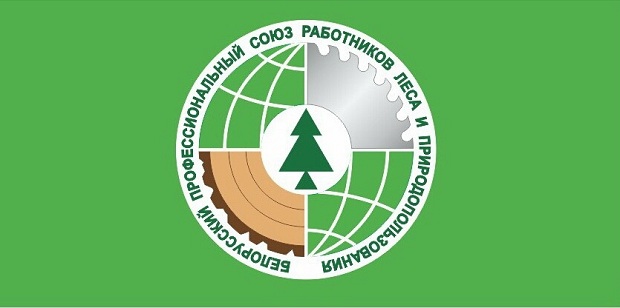Location and area of a forestry enterprise
The State forestry-based establishment “Polotskij forestry enterprise” of Vitebsk industrial association of the Ministry of the forestry sector of the Republic of Belarus is situated in the northeastern part of Vitebsk region on the territory of Polotskij and Ushachskij districts. Some of the forestry enterprise’s forests are situated in the urban part of Polotsk and Novopolotsk.
The office of the forestry enterprise is situated in Polotsk, 100 km away from Vitebsk, the regional centre.
The forestry enterprise boarders on Rossonskij forestry enterprise in the North; on Verhnedvinskij, Disnenskij and Polotskij educational experimental forestry enterprises in the West; on Ushachskij forestry enterprise in the South; on Dretunskij forestry enterprise in the East and on Shumilinskij forestry enterprise in the South-East.
Natural, climatic and forest conditions
According to the forest division into districts the forestry enterprise’s territory is a part of Western-Dwin forest district of a subzone of broad-leaved and fir forests and it is also a part of a complex of Polotsk large forests.
According to the geomorphological division into districts the forestry enterprise’s territory refers to a subdistrict of ancient lacustrine and illuvial plains.
The climate of the area is characterized, in the whole, by low heat provision and high humidity in relation to other territory of the republic. It provides the best conditions for growth of a pine, a fir-tree, a birch, a black alder, an aspen, a grey alder. Broad-leaved species (an oak, a maple, an ash-tree) experience some lack of heat and that’s why they cede to other species in the conditions of natural competition.
Average duration of the vegetative period is 175-185 days.
Mid-annual temperature of air is + 5,3 °C, absolute maximum temperature is + 34°С, absolute minimum temperature is -32°C.
Amount of precipitation per year is 580-600 mm.
Average date of the first autumn frosts is 25-30 September, of the last spring frosts is 10-15 May.
Snow cover appears on 5-10 December; it disappears in the forest on 12-18 April.
Thickness of snow cover is 20-30 sm.
Average depth of soil freezing is 60-70 sm.
According to the scheme of geomorphological division into districts the forestry enterprise’s territory refers to the area of Belorussian Lakeland of Polotsk glacial lacustrine lowland’s geomorphological district. The prevailing type of a relief is glacial lacustrine relief. Separate hills, residual lakes, ridges break its monotony. In the relief of quarternary cover’s bed there are numerous hollows of glacial plucking and erosion. The deepest of them are situated near Polotsk. The Eastern part of the area is a little raised (140-145 m above the sea level), its surface is wavy or flat.
Soil-building breeds are lacustrine glacial loams, sandy loams and sand, rare fluvioglacial sandy loams and sand. Sandy cohesive and sandy friable sedimentations prevail among them. Spreading breeds are presented by morainal loams and sandy loams, by lacustrine glacial loams. Presence of the aquiclude in the form of loam horizons or sandy-loam and loamy layers at the soil profile on the raised elements of relief improves water mode of soils, on more lowered elements it creates conditions for overmoistening of the given soils. Alluvial sandy-loam and sandy sedimentations are widespread in the flood plain of the rivers Drissa, Polota, Turovljanka by small areas.
Lowland bogs were formed in flowing and half-closed depressions with close ground waters’ bedding. Upper bogs were formed in conditions of closed-ditched relief. Transitive bogs are dated to half-closed depressions and outskirts of upper bogs.
According to relief peculiarities, peculiarities of environmental conditions, of soil-building breeds, of vegetation there are the following processes of soil formation in the territory of the forestry enterprise : cespitose, podsolic, cespitose podsolic, marsh and flood-plain, as a result of which 10 types of soils were formed.
According to the degree of participation of the marsh process there are five consecutive groups of gleied soils (gleied below, contactly gleied, temporarily overmoisted, gleyey and gley), based on morphological signs of genetic horizons, ecological factors and on economic reasons.
Sod-podzol automorphic soils occupy 14,6 % of forestry enterprise’s territory and are dated to raised well-drained arias with deep bedding of ground waters.
Peat marsh soils are widespread (37,1%). Peat marsh soils of lowland type of bogs prevail among them (23,6%), they are characterized by high peat ash content, have a high degree of decomposition, their color varies from brown to black. Peat marsh soils of transitive type of bogs occupy 9,5%. Peat of transitive bogs is characterized by smaller ash content, raised acidity and rather a small amount of food elements. Peat marsh soils of upper type of bogs occupy 4,0%. All the upper bogs are characterized by weak decomposition of peat, small ash content and high acidity.
Cespitose half hydromorphic soils occupy 4,4 % of the forestry enterprise’s territory and are formed on weak drained plains and the lowered elements of relief with close from a surface bedding of ground waters containing a significant amount of elements of plants’ nutrition. Cespitose saturated half hydromorphic soils are characterized by high fertility. Gley soils sharp discrepancy between low and high potential fertility is common.
Inspection of forestry enterprise’s soils with allocation of soil typological groups was held in 1983 by a soil party of 1st Minsk forest-making expedition. On the basis of soil materials made by Vitebsk branch "Belgizprozema» 49 soil-typological groups have been organized on the areas accepted from agricultural establishments PTG, and for each group target breed has been defined. They unite soil varieties with related genetic, morphological and agrochemical characteristics of soils and a mode of their moistening, possessing homogeneous forest-growing effect and demanding identical system of economic actions. The number of PTG and the target breed can be found in the forest valuation description for every allotment of the forest areas.
In the whole, the forestry enterprise possesses good soil potential, which allows growing highly productive plantations.
Hydrography and hydrological conditions
The forestry enterprise’s territory is characterized by a dense river network, relevant to a river basin of Western Dvina.
All the rivers refer to the flat type with the nutrition by atmospheric precipitation and partially ground waters. Flood plains are poor developed in the valleys of the rivers. A part of the rivers is straightened as a result of meliorative works.
There are many big and small lakes of ditch type in the territory of the forestry enterprise and the areas that boarder it.
Average date of rivers freezing is the middle of December, the beginning of spring flood is in the middle of April.
The forests within water security zones were transferred from the second group to the first one by the order of the Cabinet of Ministers of Belarus №498р from 15.12.94.
The width of the allocated water security zones and coastal zones satisfies the «Regulations about an order of sizes and borders establishment of water security zones and coastal zones...», confirmed by the Decision of Council of Ministers of Belarus of 3/21/2006 №377.
According to the existing regulations there is a limited mode of forest utilization in coastal zones. Voluntary-selective cutting of weak intensity during the winter period is held in them.
The ways of cutting of the main usage in the limits of forbidden wood zones and water protection zones are coordinated according to the existing order with the regional inspection of natural resources and protection of the environment.
The total area of Polotsk district is 3134,6 км2.
The area Polotsk forestry enterprise is almost completely located in the district territory, 41 hectares of the area of the forestry enterprise refers to Ushachsky district.
There are 765 hectares of the area of Shumilinsky, 449 hectares - of Rossonsky, 55558 hectares - of Dretunsky, 8403 hectares - of Verhnedvinsky and 10547 hectares – of Polotsk educational-experimental forestry enterprises in territory of Polotsk district. The amount of forests in the district is high, it makes 55,4 %.














